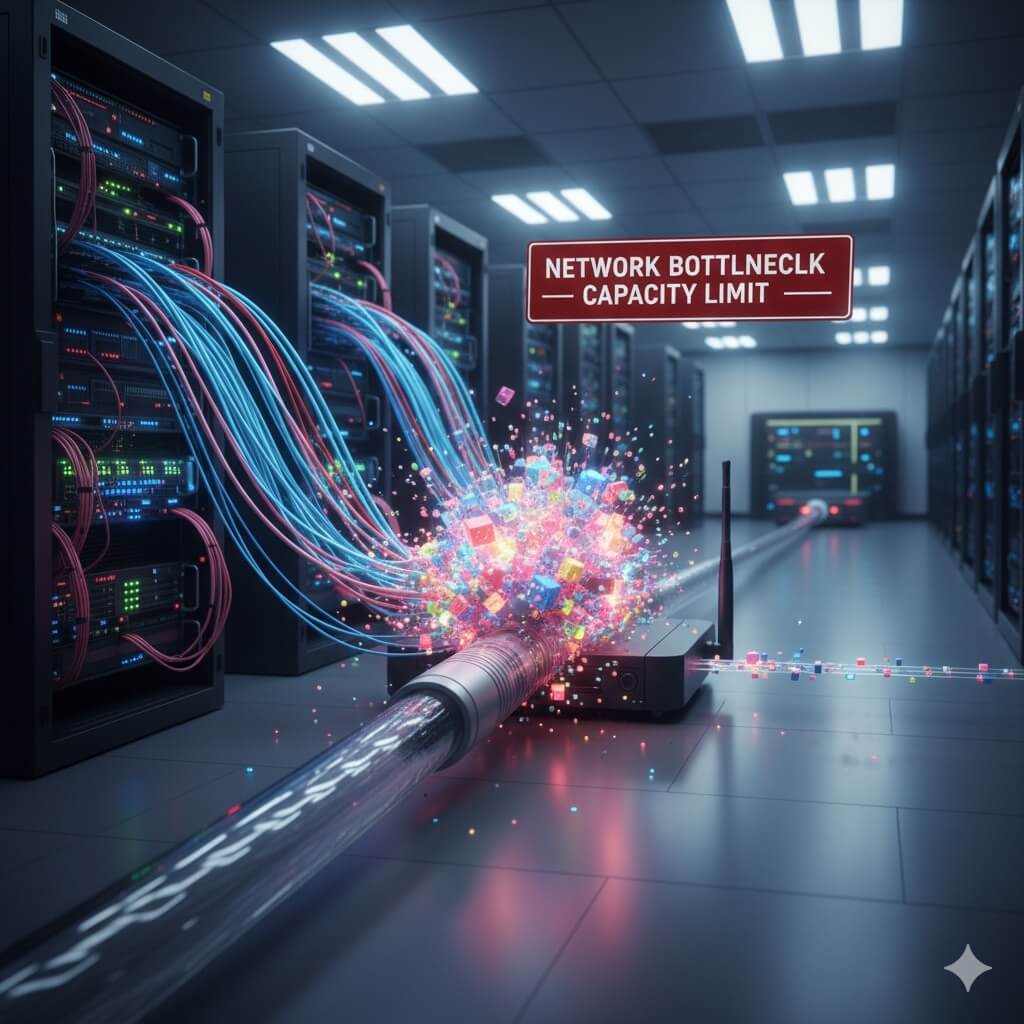What Is a Network Bottleneck?
A network bottleneck happens when a specific device, connection, or component within the infrastructure cannot handle the volume of traffic passing through it. When capacity is exceeded, data begins to queue, creating congestion that ripples across the entire network.
These chokepoints can stem from multiple causes — from overloaded routers and misconfigured switches to limited bandwidth or high CPU usage. Whatever the reason, the result is the same: reduced throughput and degraded user experience.
The Hidden Impact of Network Bottlenecks
The consequences of a network bottleneck extend beyond slow connections. They can trigger a chain of system and operational issues, including:
- High Latency: Increased response time as data packets take longer to reach their destinations.
- Packet Loss: Overloaded routers or switches dropping packets, disrupting communication.
- Poor Application Performance: Video conferencing, VoIP, or business-critical applications suffer.
- Temporary Service Outages: Core services like DNS, email, or VPN may become unreachable.
- Misleading Diagnoses: IT teams may misattribute performance issues to applications instead of the network layer.
In short, one unnoticed network bottleneck can reduce the efficiency of an entire IT ecosystem.
Eliminating Bottlenecks with Monitoring and Observability
To tackle these challenges, organizations are turning to advanced monitoring and observability platforms. These tools provide end-to-end visibility across the network, helping IT teams quickly locate, analyze, and resolve bottlenecks before they impact users.
Key Benefits of Network Observability Solutions
1. Real-Time Traffic Analysis:
Protocols like NetFlow, sFlow, and SNMP help identify which device or connection is creating congestion.
2. Capacity Planning:
Continuous monitoring supports accurate forecasting for bandwidth and hardware needs.
3. Root Cause Analysis:
Pinpoints the actual reason behind a bottleneck—whether high CPU load, a faulty interface, or misconfigured QoS policies.
4. Proactive Alerts:
Threshold-based alerts detect anomalies early, allowing preventive actions before performance suffers.
5. Visualization and Trend Tracking:
Intuitive dashboards and trend graphs reveal traffic patterns, making it easier to detect performance degradation in advance.
Conclusion: Don’t Let Network Bottlenecks Stay Invisible
Network bottlenecks are silent but powerful disruptors that can compromise productivity, reliability, and user satisfaction. By leveraging modern monitoring and observability solutions, IT teams can make the invisible visible — identifying congestion points early, preventing outages, and maintaining optimal network health.
In a world where performance is everything, real-time visibility into your network is no longer optional — it’s the foundation of sustainable IT operations.


